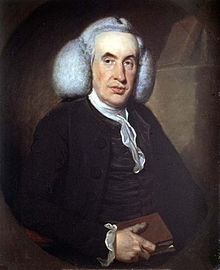Of Course They Had to Try Bleeding
I’ve been looking at how young Gershom Spear drowned in 1762 but got better. Finding some way to resuscitate drowning victims was a consuming topic in the Age of Sail. Not just because of the loss of life, but also the fear that someone presumed dead might accidentally be buried alive.
Two days ago I quoted a letter from Capt. John Bell about how British diplomat Gabriel Hervey had revived an apparently dead sailor in Portugal by rubbing him with salt. That 1761 letter was not only published all over the British Empire but also translated into French and published in Paris.
In reprinting the letter, the London Magazine and the Annual Report referred readers to other methods of reviving drowned people discussed in their pages. In a 1745 article the magazine had recommended these treatments for a man feared dead by drowning:
In 1774 two London doctors, William Hawes and Thomas Cogan, set up a “Society for the Recovery of Persons Apparently Drowned,” showing the ongoing interest in the challenge. Eventually that organization was renamed the Royal Humane Society. Its mandate expanded to include rescues and swimming lessons.
In 1776, the Gentlemen’s Magazine published an article by royal physician William Cullen (shown above) on a “Method of Recovering Persons Apparently Dead by Drowning.” Cullen said the top priority was to heat the body. Among other methods, he recommended keeping “bags of warm and dry salt” around to heat over a fire in an emergency. That advice was reprinted for decades.
However, in 1792 Dr. James Curry wrote in Observations on Apparent Death from Drowning, Suffocation, &c. that “The practice of rubbing the body with salt or spirits, is now justly condemned,” despite its apparent efficacy in those two cases from the early 1760s. He still recommended warmth, though.
Two days ago I quoted a letter from Capt. John Bell about how British diplomat Gabriel Hervey had revived an apparently dead sailor in Portugal by rubbing him with salt. That 1761 letter was not only published all over the British Empire but also translated into French and published in Paris.
In reprinting the letter, the London Magazine and the Annual Report referred readers to other methods of reviving drowned people discussed in their pages. In a 1745 article the magazine had recommended these treatments for a man feared dead by drowning:
- rolling him around in a bottomless cask
- making him vomit by “thrusting several Times a Quill with its feathers down his throat”
- keeping the body warm
- shaking the body, or picking it up and dropping it
- pouring spirits or pepper into his mouth
- blowing tobacco smoke into his nose, mouth, or anus
- bleeding from the jugular vein or “Trachian Artery”
In 1774 two London doctors, William Hawes and Thomas Cogan, set up a “Society for the Recovery of Persons Apparently Drowned,” showing the ongoing interest in the challenge. Eventually that organization was renamed the Royal Humane Society. Its mandate expanded to include rescues and swimming lessons.
In 1776, the Gentlemen’s Magazine published an article by royal physician William Cullen (shown above) on a “Method of Recovering Persons Apparently Dead by Drowning.” Cullen said the top priority was to heat the body. Among other methods, he recommended keeping “bags of warm and dry salt” around to heat over a fire in an emergency. That advice was reprinted for decades.
However, in 1792 Dr. James Curry wrote in Observations on Apparent Death from Drowning, Suffocation, &c. that “The practice of rubbing the body with salt or spirits, is now justly condemned,” despite its apparent efficacy in those two cases from the early 1760s. He still recommended warmth, though.


No comments:
Post a Comment